With a crunchy exterior and chewy interior, Seeded Multigrain Sourdough Bread is texture rich with an earthy blend of grains and seeds to make a crave-worthy loaf. Readers share this is a versatile loaf and one of their favorites (see comments below)! Got leftover sourdough bread? This loaf makes fabulous Sourdough Croutons. This sourdough is vegetarian and vegan friendly.
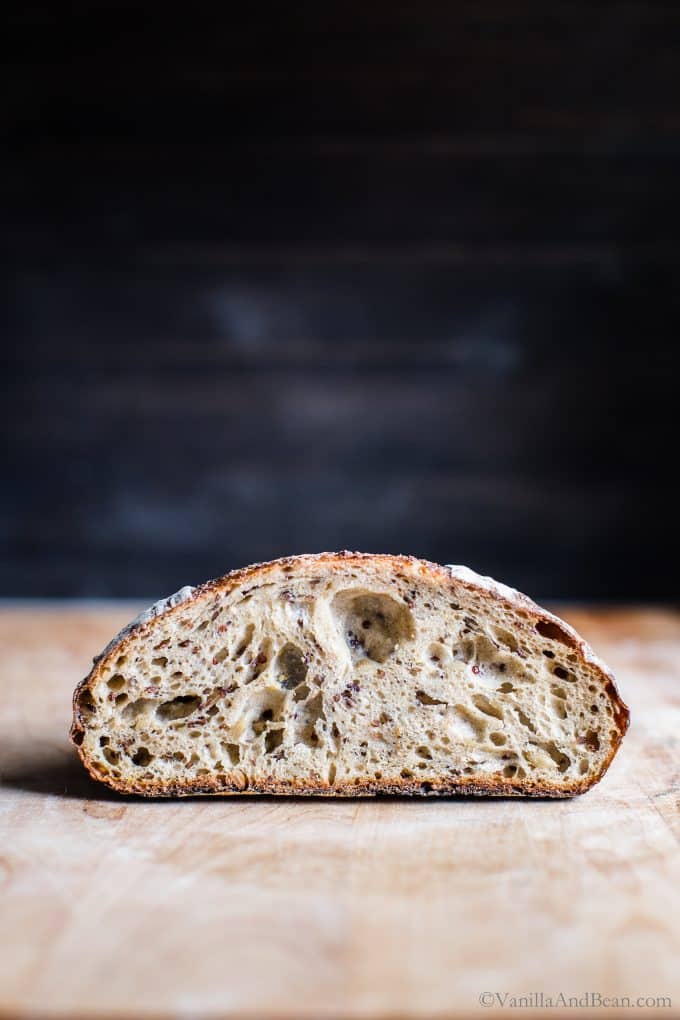
Table of Contents
Celebrating Multigrain Sourdough Bread
If you love Sourdough Recipes, you’ll enjoy this crusty, flavorful seedy loaf. It’s a perfect crumb for sandwiches, toast and anything you want to slather on it.
This was the first loaf I made after an eight-month gluten hiatus. I couldn’t believe how resilient the sourdough starter was after having been neglected for far too many months. After all, I was focusing my efforts on a gluten-free sourdough starter and bread recipe, which you can now find here: my gluten free starter and gluten free sourdough bread.
But, I’m thrilled to be back to my glutenous ways and excited to share more sourdough recipes with you!
This Recipe Is:
- seedy
- has a sturdy crumb for sandwiches, toast and slathering all the things
- bulk fermented overnight
- quick room temperature proof
If you have sourdough starter discard, you can use it in these Olive Oil Sourdough Crackers.
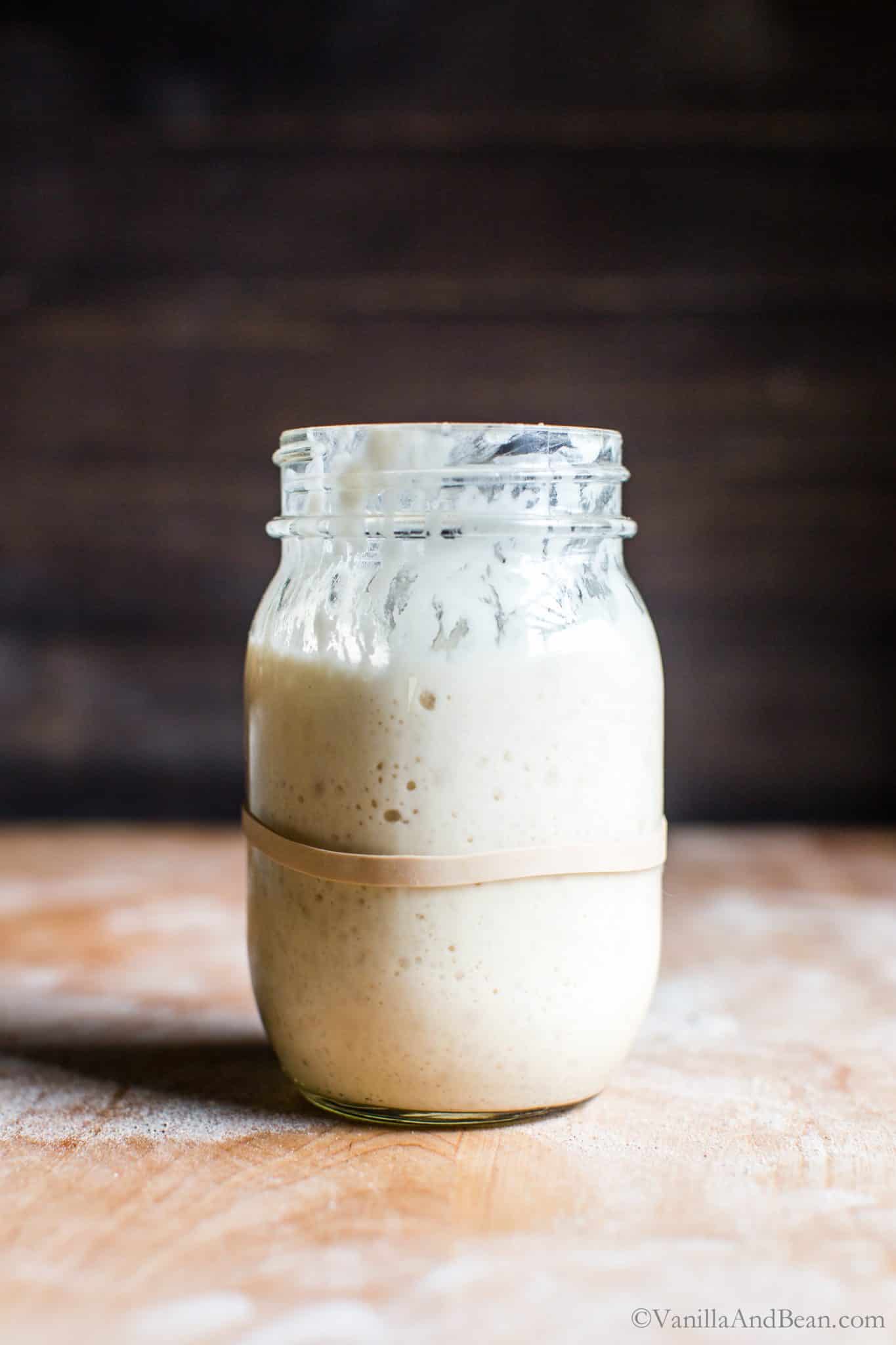
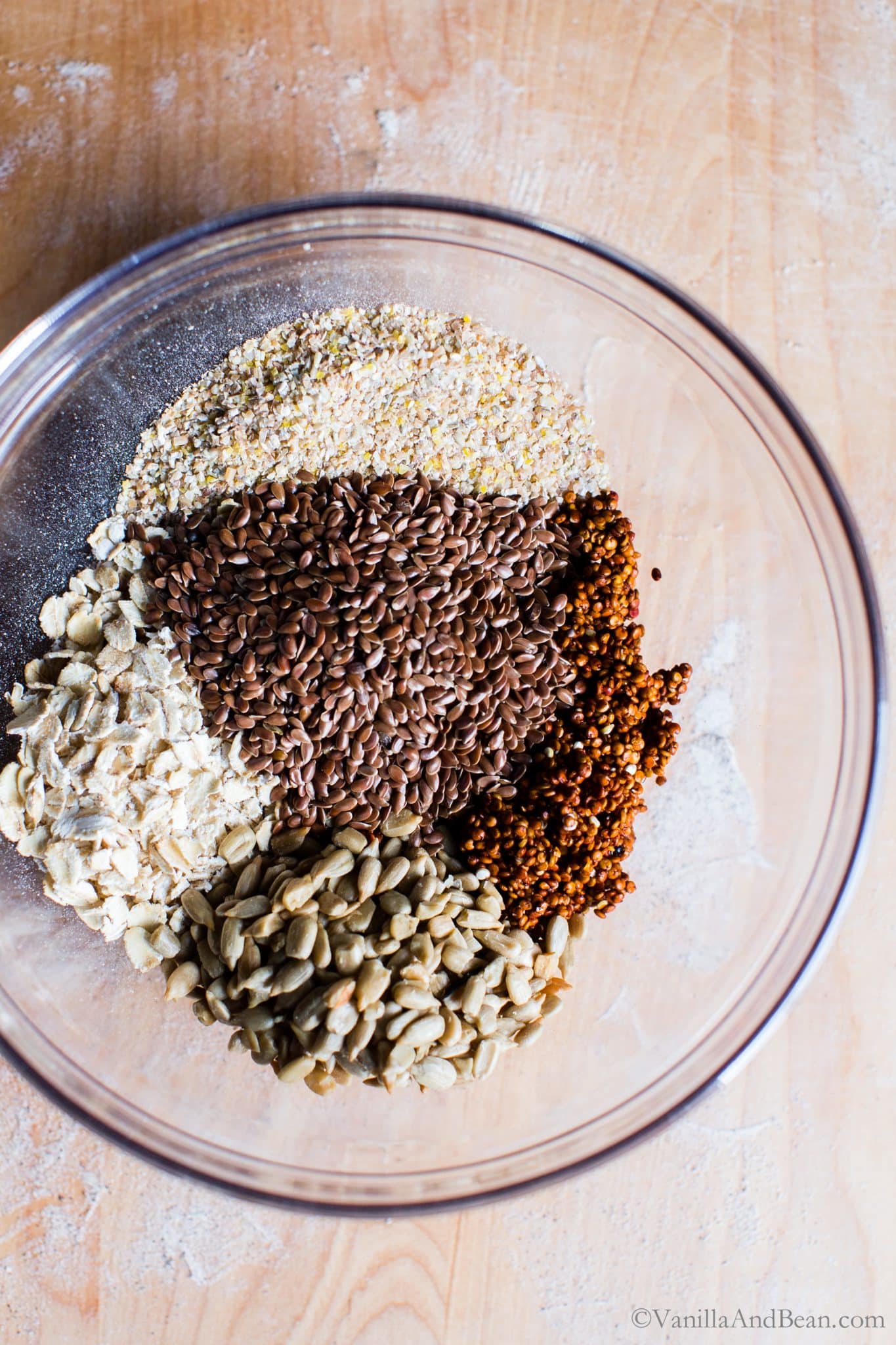
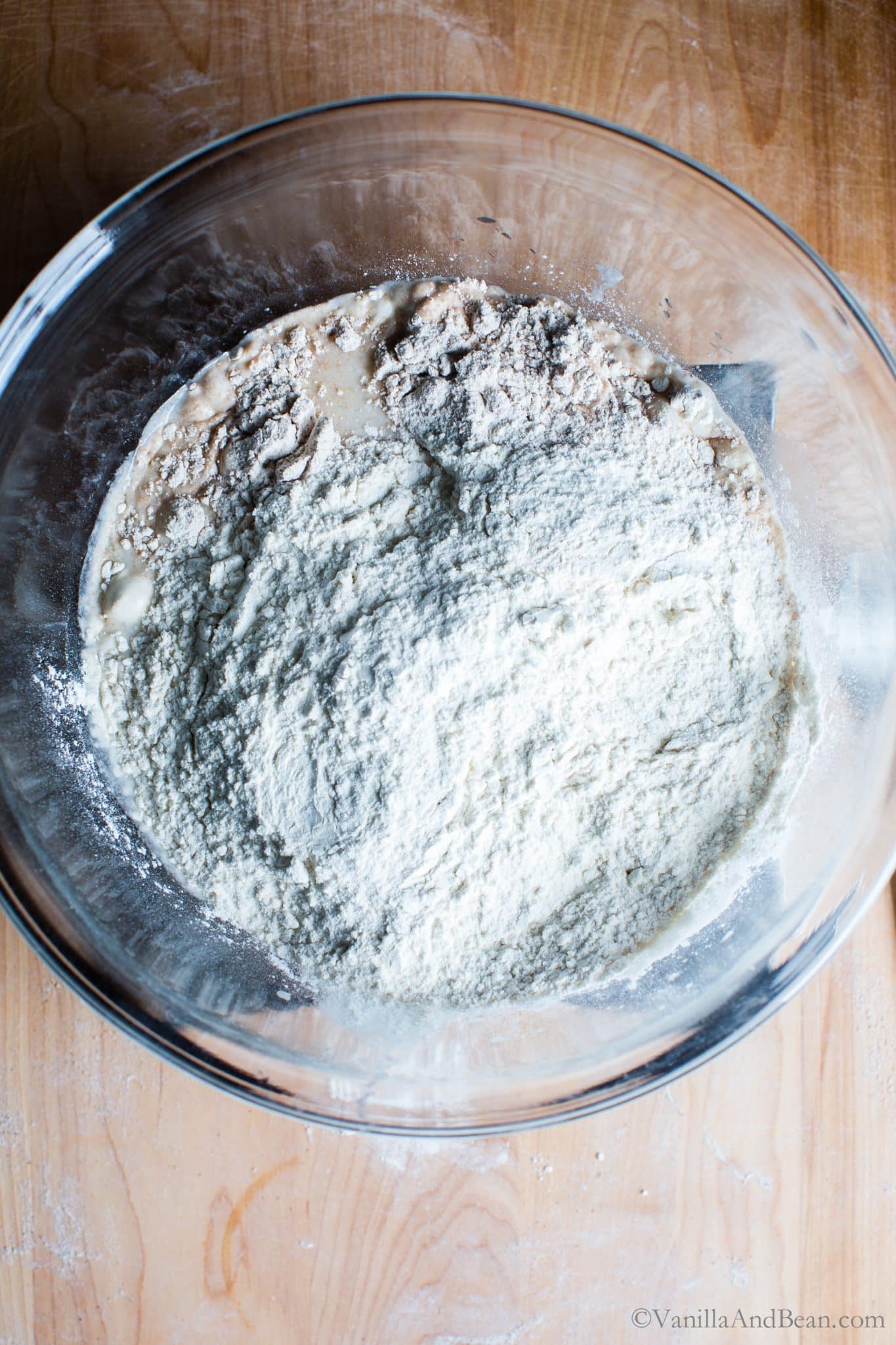
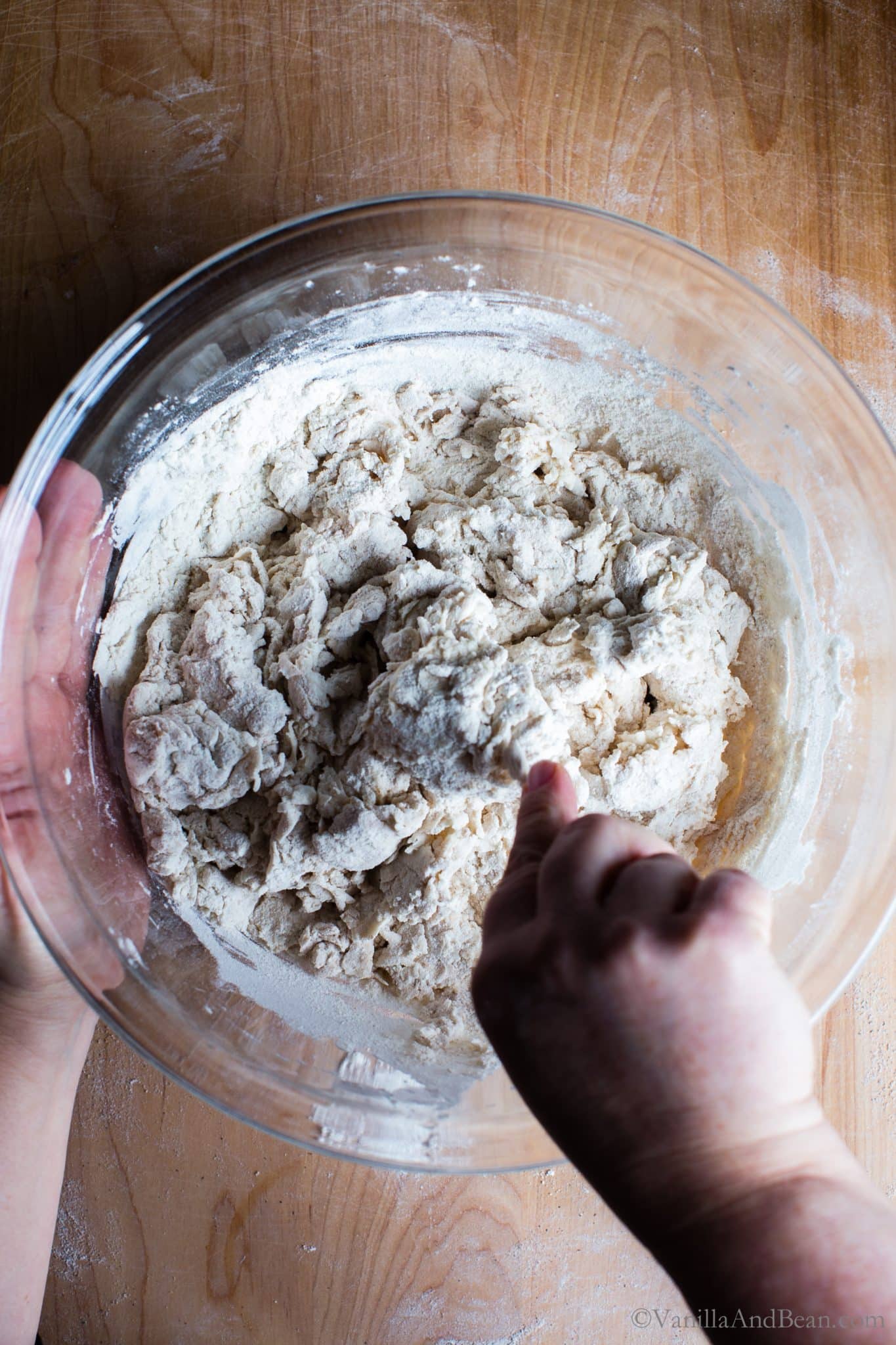
Recipe Inspiration
This seeded sourdough bread recipe is an adaptation on my Yeasted Multigrain Sandwich Bread, a bread I made often before learning how to make sourdough bread. Chock full of grains, including a 10 grain cereal, oats, and quinoa, I also add sunflower and flax seeds to create more texture and flavor.
Making sourdough bread isn’t hard, but, it’s a process that takes a little planning and practice. I used to say I think about sourdough longer than it takes me to create a loaf. And while this was the case at one time, now that I know how to make it, manipulate the rise time through retardation if needed, shape and proof the dough, and bake sourdough, the process doesn’t seem so daunting anymore. Its become closer to second nature, and I don’t think about it as much. A little more brain space is always good!
If you love sourdough recipes, check out my Sourdough Discard Recipes collection. I know you’ll find something new to love!
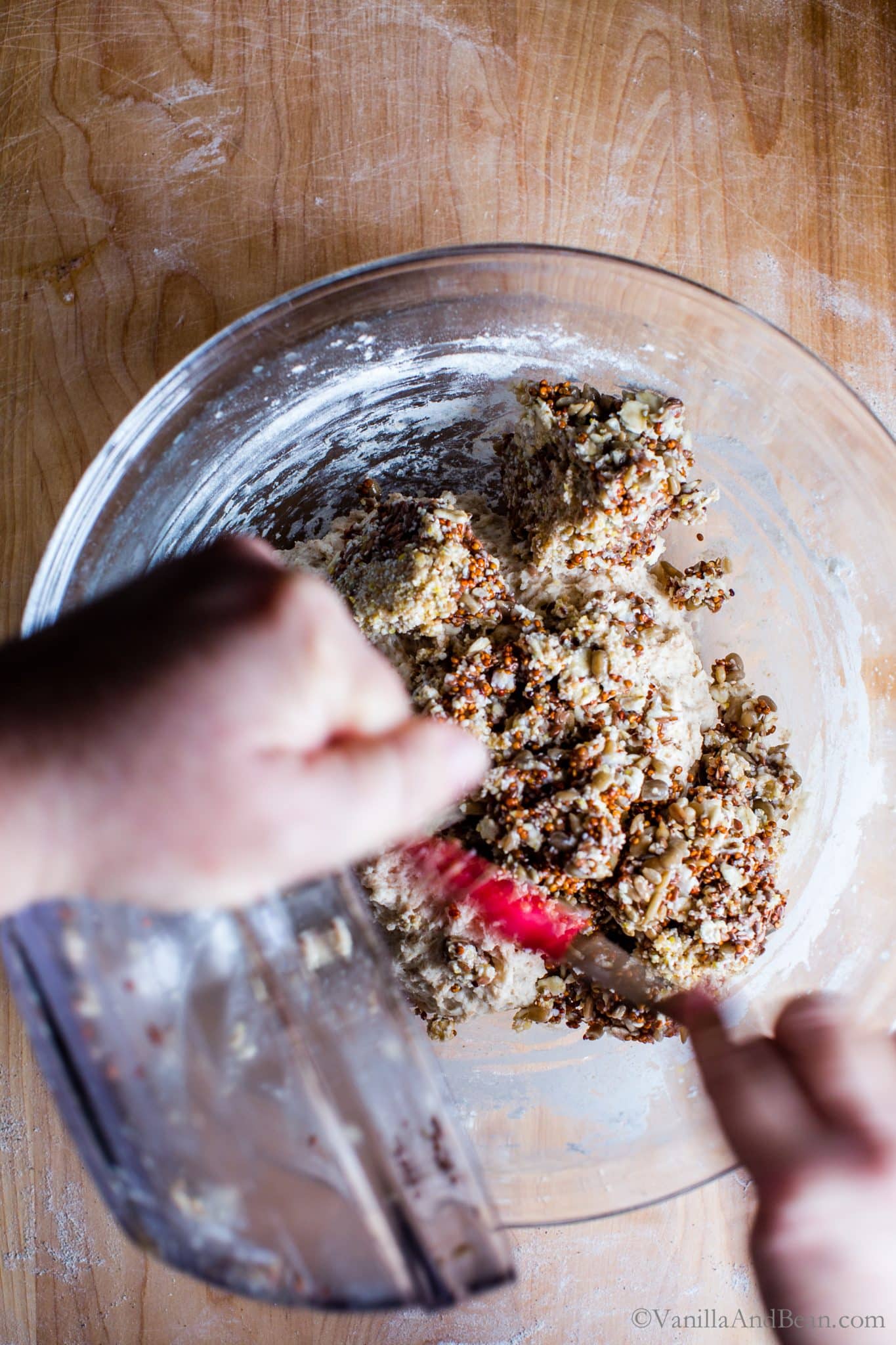
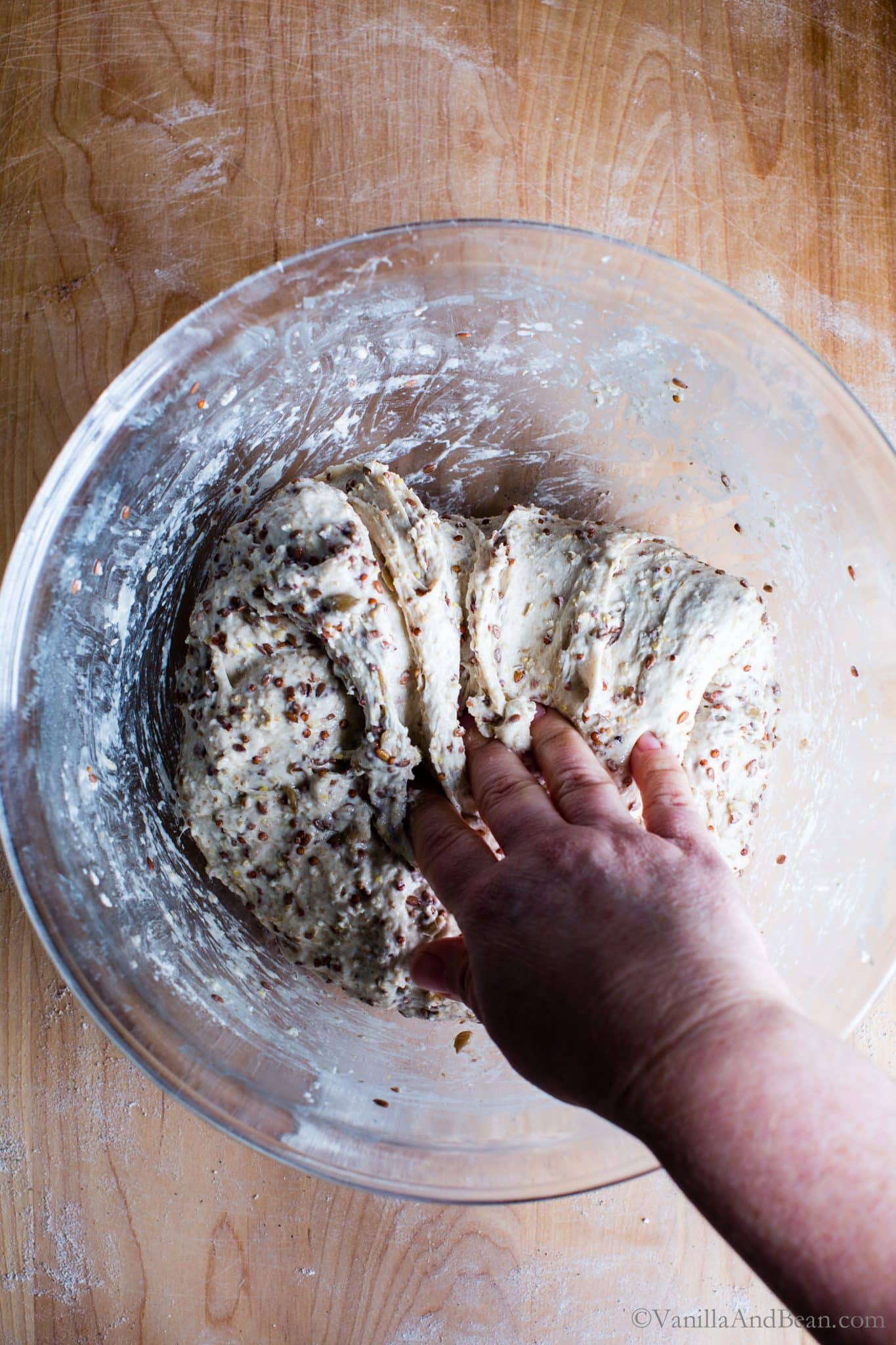
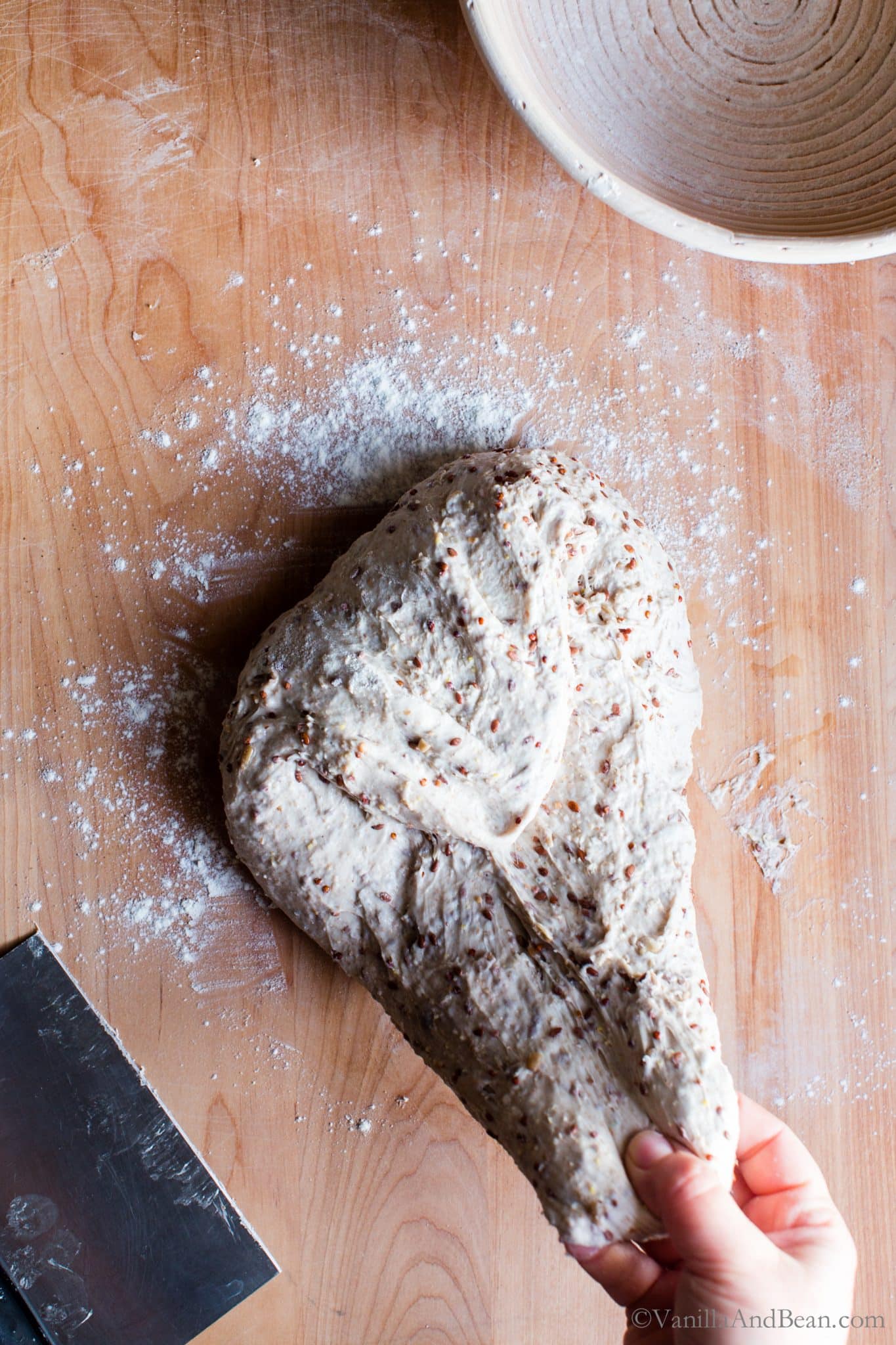
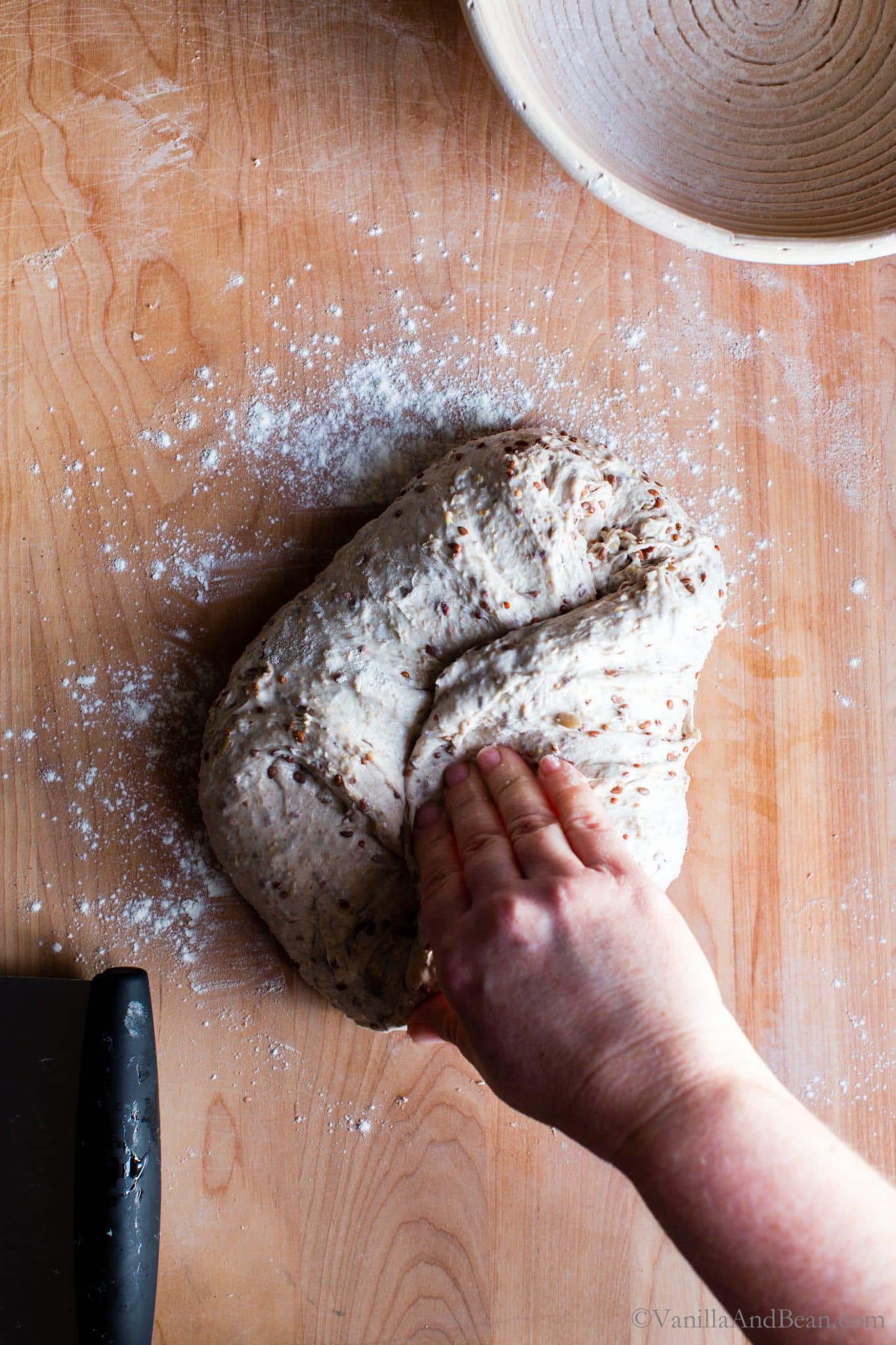
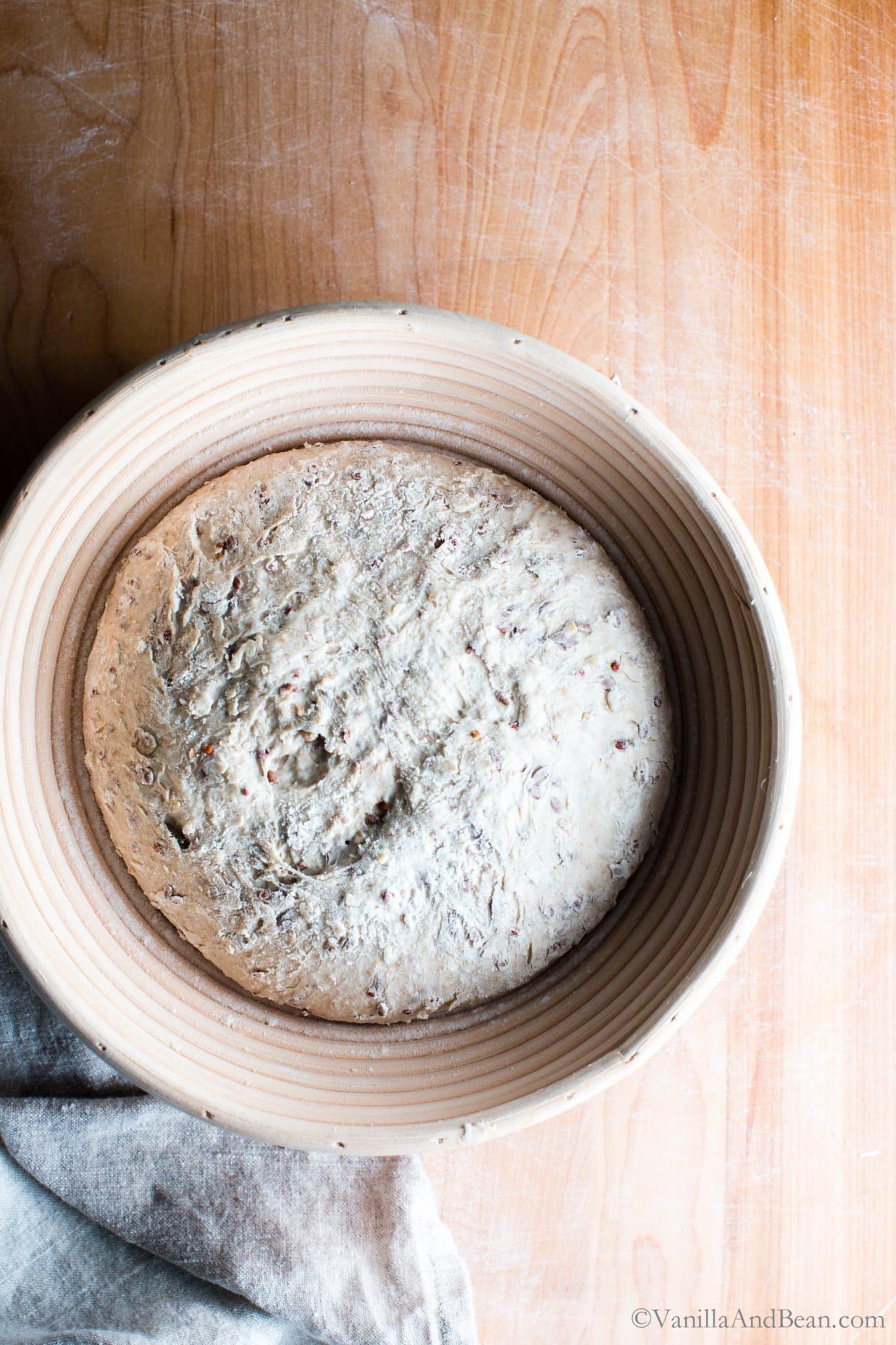
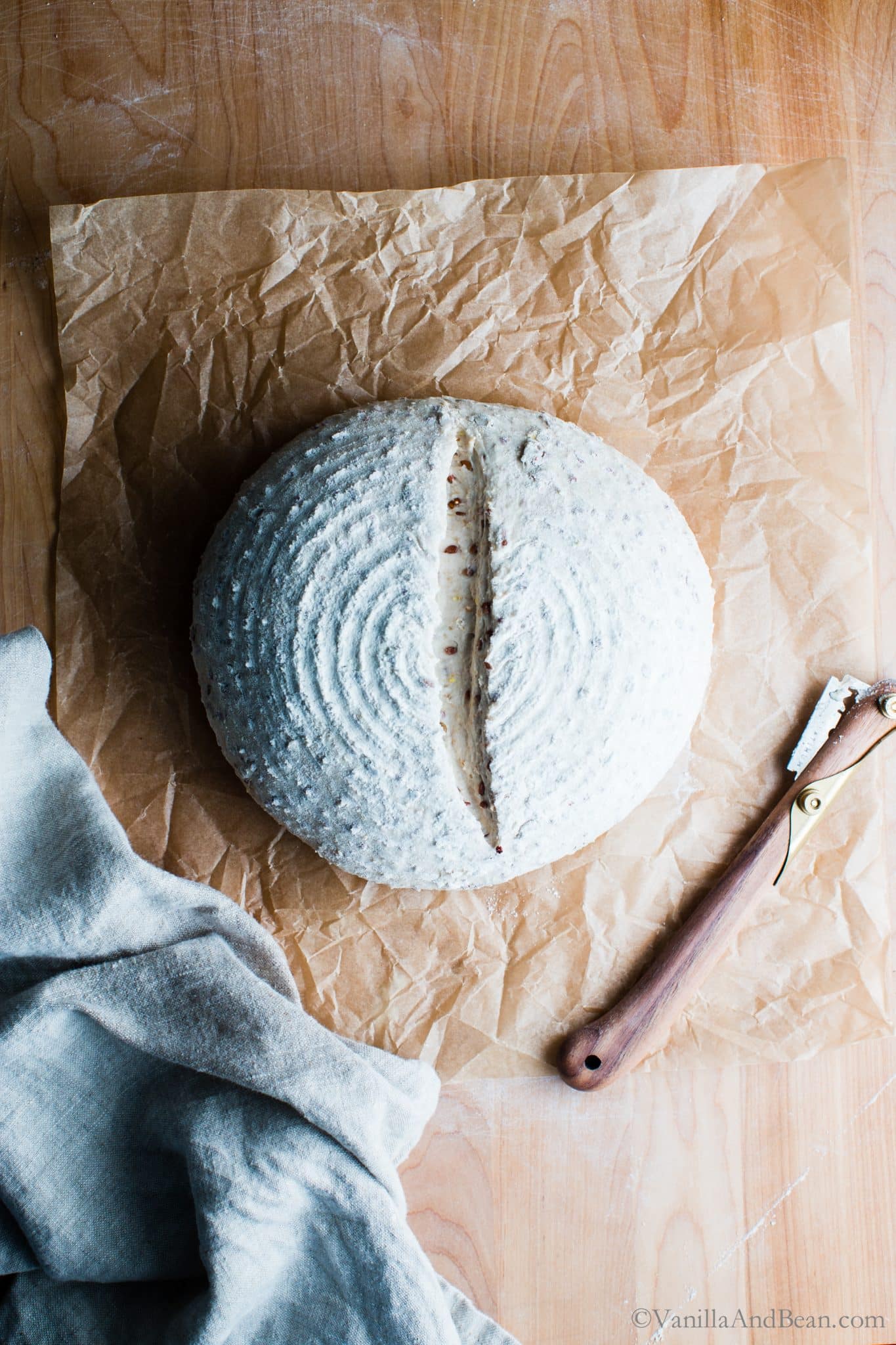
Quick Guide: How to Make Seeded Multigrain Sourdough Bread
The process is pretty straightforward but it takes a bit of planning. I typically mix the night before and bake early on a weekend morning because I have a bit more flexibility then. While you sleep, your little dough baby is growing! Here’s how to make it (see recipe card below for full details):
- First, in the evening, prepare the soaker by pouring hot water over the mixture of seeds and grains.
- Second, mix the dough using a previously fed, active and bubbly sourdough starter, water and a mixture of bread and whole wheat flour. Rest the dough for 30 minutes.
- Third, mix in the soaker, mixing and incorporating the grains and seeds into the sticky dough. Rest the dough for 30 more minutes.
- Fourth, fold the dough. Begin bulk fermentation after the first fold or rest again for 30 minutes and perform a series of up to two more folds resting for 30 minutes between the folds. The additional folds are optional, but are beneficial in building structure and creating a beautiful crumb (pictured in this post). Do it if you have time.
- Fifth, bulk ferment the dough at room temperature for 8-14 hours. The time will depend on ambient temperature, and your specific sourdough starter.
- Sixth, shape the dough into one, 2 lb boule or two, 1 lb boules.
- Next, proof the dough for about 30-45 minutes at room temperature.
- Last, score and bake!
The aroma wafting through the house is so warm and inviting, you’ll want to rip into the bread as soon as it comes out of the oven.
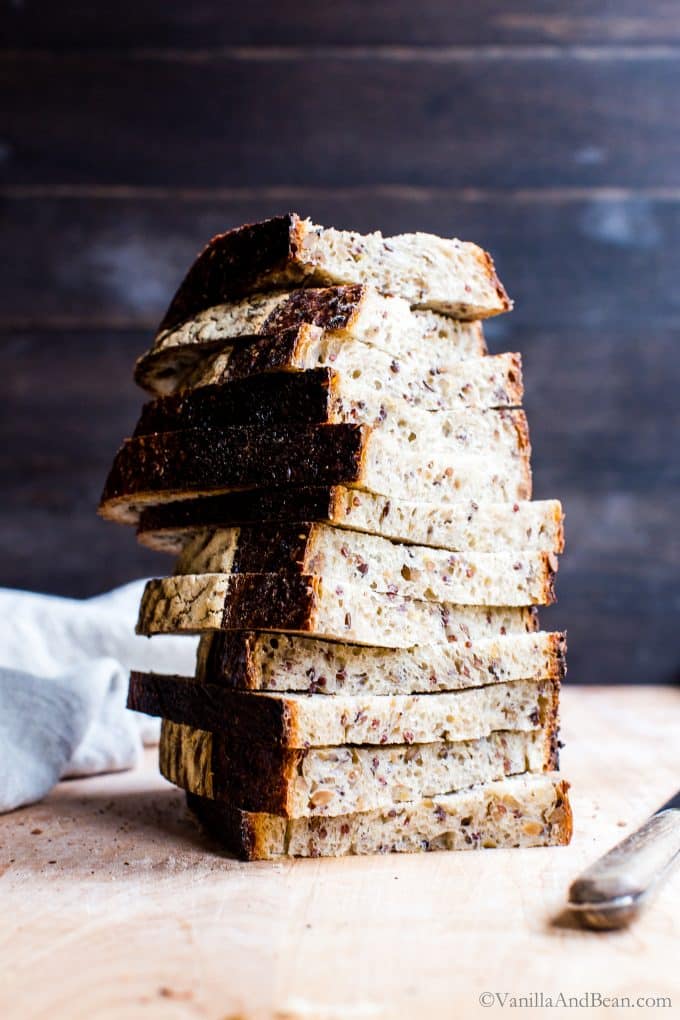
How Long Does it Take for Sourdough to Rise?
- Sourdough rise (bulk ferment) time depends on several factors: ambient temperature and how active your starter is. Also, a firmer dough will take longer to rise than a well-hydrated dough.
- When fermenting at room temperature, bulk rise time in summer will differ from winter rise times.
- An ambient temperature of 70F (21C) will require a bulk rise time of about 8-10 hours. My kitchen tends to be cooler most of the year, but in the winter, it’s downright cold. It’s not unusual for my sourdough to take up to 14 hours to rise during the coldest months.
How To Tell When Sourdough Has Risen Enough
- The bulk fermented (first rise) dough is ready when:
- it no longer looks or feels dense
- is jiggly when the bowl is shaken
- has about doubled in size
- you may see a few large bubbles on the surface of the dough
Why Allow The Bread To Cool After Baking
To complete the cooking process, sourdough bread needs at least an hour to an hour and a half to rest at room temperature. The crust will continue to develop as the sourdough cools as well. However, I won’t deny that I’ve ripped into a few loaves before the hour was up. It’s sublime with a slather of butter.
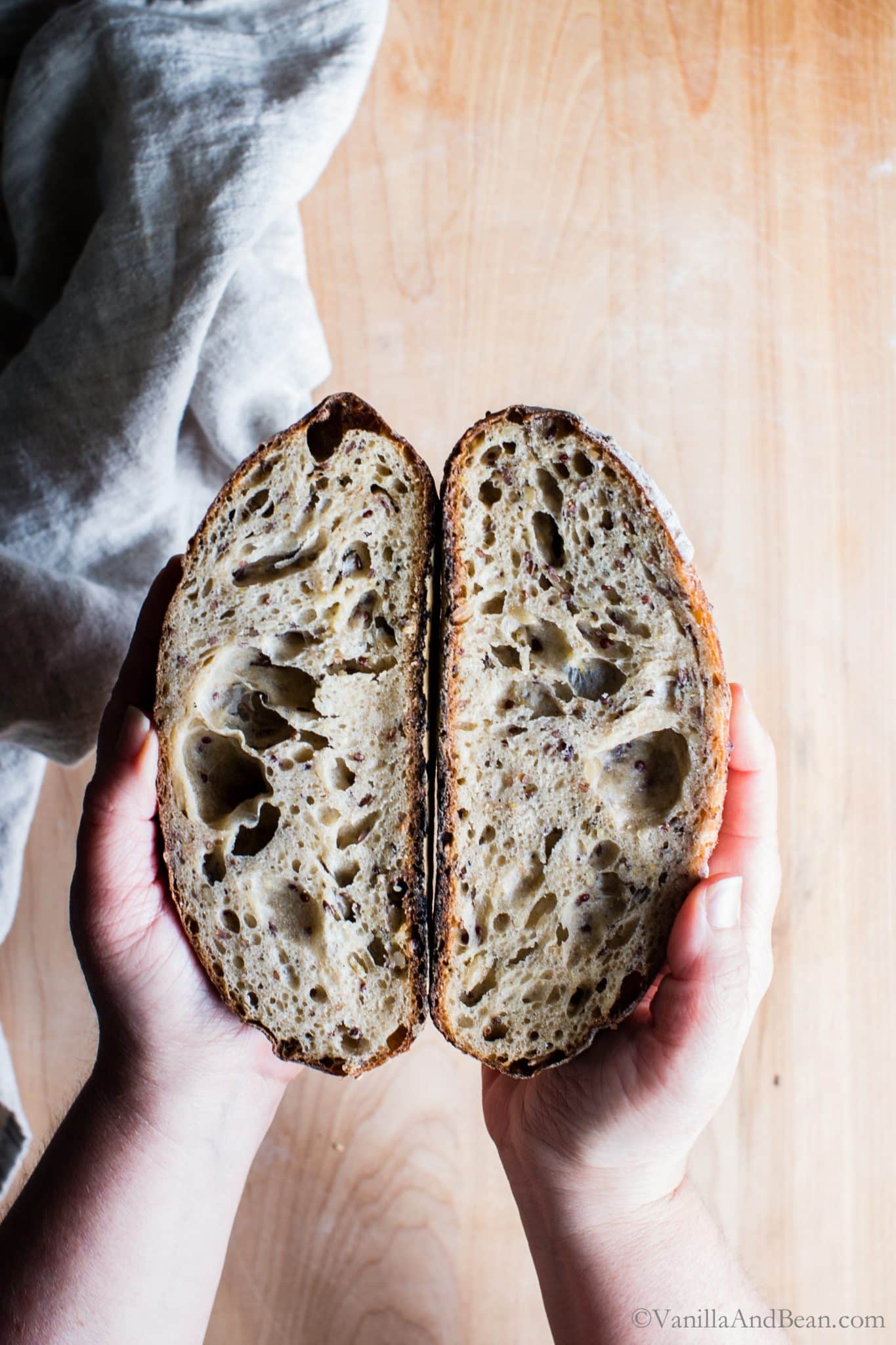
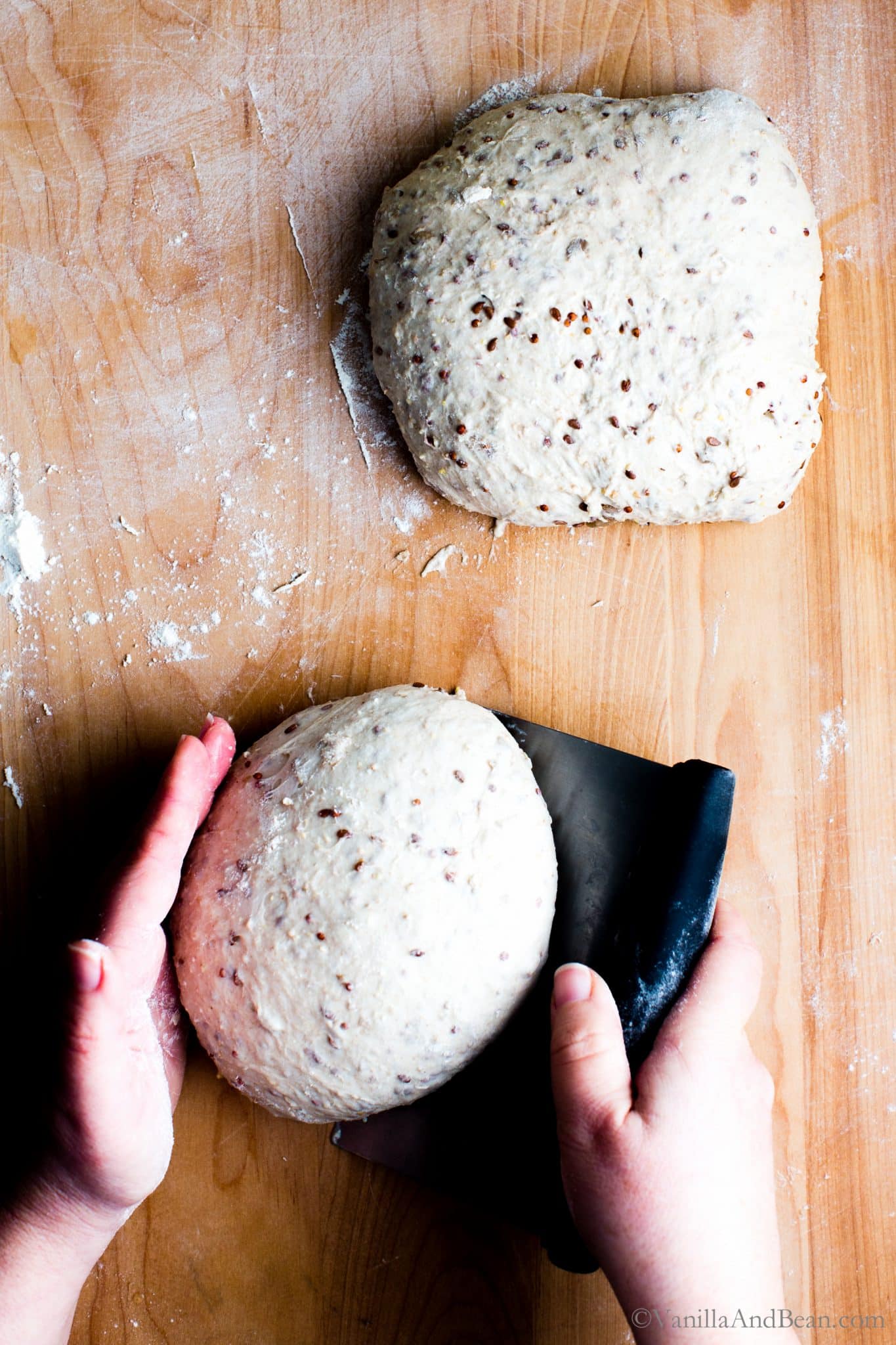
How Do You Store Sourdough Bread?
- Store sourdough bread at room temperature on a cutting board or counter, cut side down. Although freshest the day made, it will store this way for 3-4 days. If you need to cover the bread, place it in a paper bag.
- Refrigerating bread dries it out and will ruin its texture.
- For longer storage, place the bread sliced or whole in a freezer bag and freeze for up to two weeks.
What is the Best Vessel to Bake Sourdough Bread In?
I use two vessels to bake sourdough bread. One is a 10″ cast iron skillet with deep dish skillet for a lid and the other, a 7 quart Staub Dutch oven. I recommend either or both, but I’ve noticed the Staub bakes the bottom of the bread darker than the cast iron, sometimes it’s burnt. This may have to do with the vessels’ differing materials.
UPDATE (5/20) Burnt Sourdough Bottom: After testing various methods to remedy the too dark bottom problem, as commenters have mentioned on this sourdough recipe (and on many other non V&B recipes – this is not uncommon in the sourdough world), I’ve finally found the simplest solution ever (duh!). Simply place a sheet pan on the oven rack under the rack your baking vessel is setting on. This helps protect the vessel from the most intense heat of the oven. The two images below show one of the boules I baked using this method.
Prior to doing this, I used a method I learned from The Perfect Loaf who suggests using a double layer parchment or a dusting of course cornmeal alone or under the parchment. Doing this offers a bit of distance between the bottom of the dough coming in direct contact with the base of the vessel. But I still had a bit of too dark bottom. Now, I exclusively use the sheet pan method.
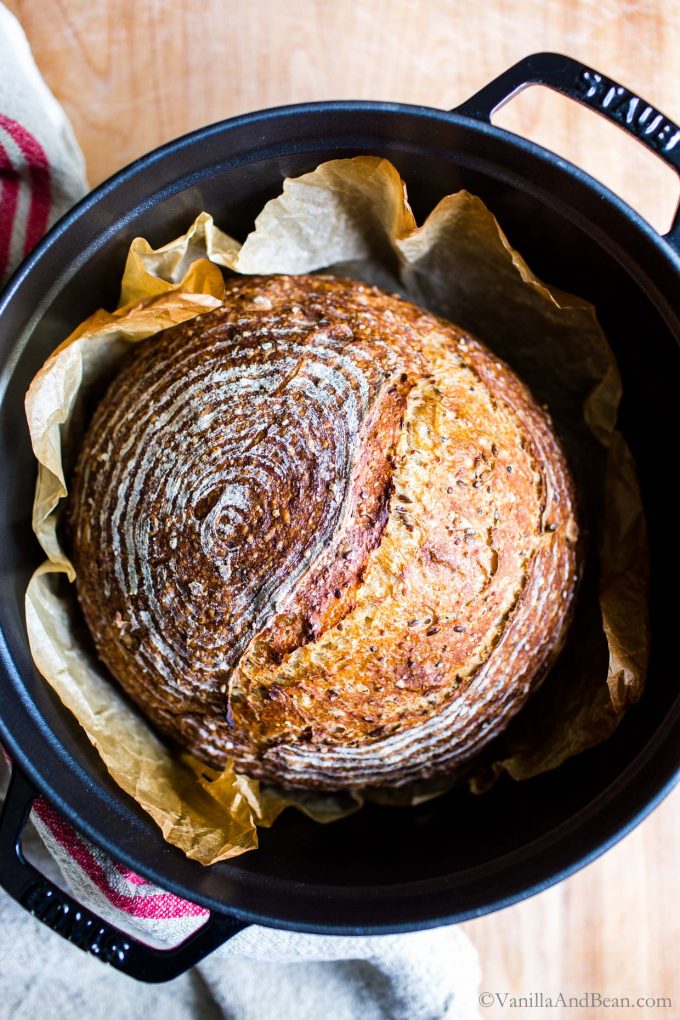
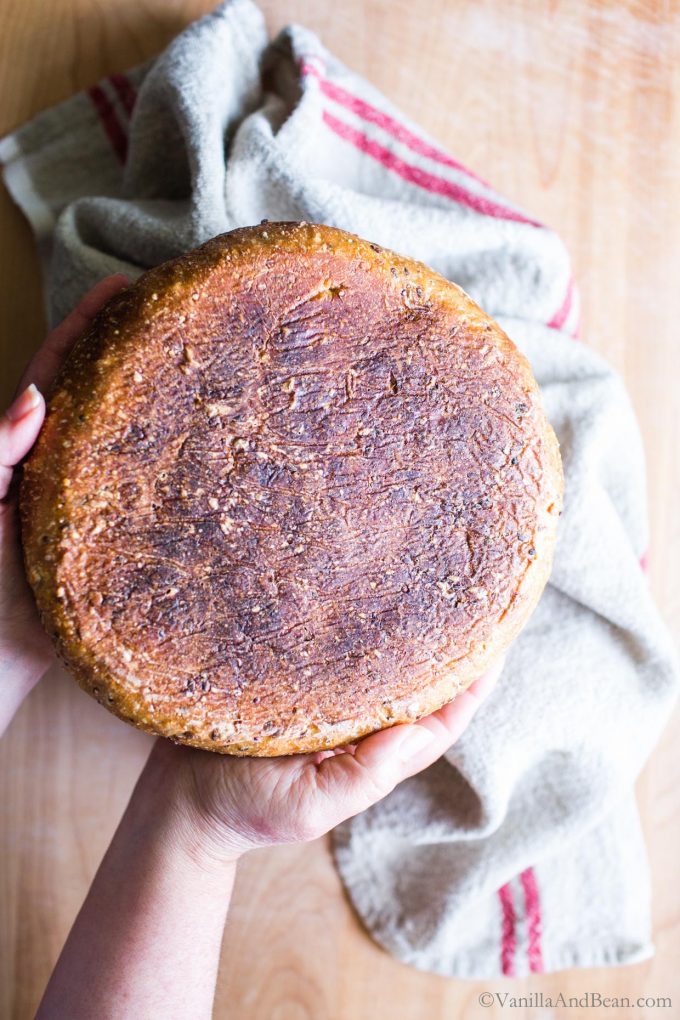
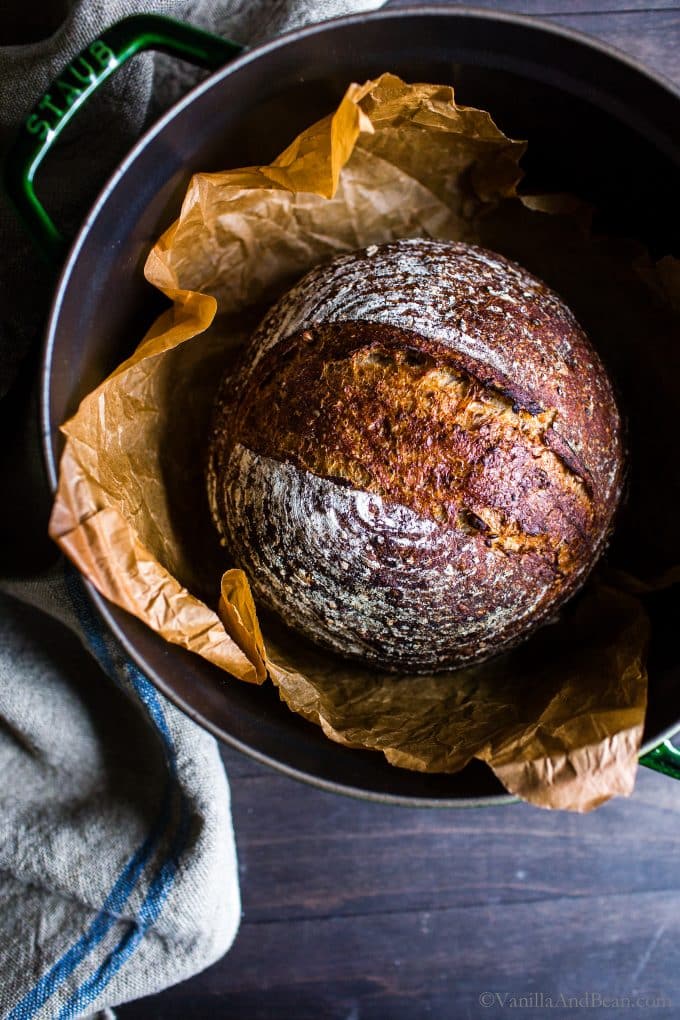
Expert Tips
- Because kitchen temperatures vary, use the time suggestions in the recipe as such. Let the bread guide your process rather than the clock.
- Mini Boules? Yes please! This sourdough recipe can be made into one, 2 lb boule or two, 1 lb boules. The one-pound boules are fabulous for bread or dipping bowls, or if you’re baking for one or two and want to freeze or give away the second loaf. Both sizes make decent size sandwich bread.
- TIP: This recipe calls for 10 grain cereal. If unavailable, you can use 7 grain or even 6 grain cereal. Also, a combination of polenta, millet, quinoa, and/or amaranth can be subbed, but the flavor will be different.
- Whole wheat bread flour can be difficult to find. If unavailable, this recipe will also work using whole wheat flour with similar results. Whole wheat bread flour renders the dough a bit easier to work with, however (more stretchy).
- Freezer friendly? Yes please! Store baked bread in a freezer bag, either whole or sliced for up to two weeks. Thaw at room temperature or if used for toast, toast directly from freezer to oven.
- For a tutorial on how to make a sourdough starter, see my post on how to make a sourdough starter.
Makers Notes
So happy to read y’all are enjoying the bread in the comments below. Keep those tips comin’! Here are excerpts from the community:
- Emily Commented: “…used apf (all-purpose flour) instead of bread flour, but the result was still stunning, I got a gorgeous rise and soft moistness with a chewy crust.”
- Marilyn Commented: “I used a 5 qt DO for 1 loaf (without splitting the dough in half) and it was fine!”
- Dara Said: “I didn’t have all the ingredients the recipe called for so I used a combination of sunflower seeds, oats, hemp seeds, flax seeds, and millet.”
- Samantha Commented: “I did 3T each of quinoa, rolled oats, pumpkin seeds, sunflower seeds. I did 3 cups all-purpose unbleached white flour and 1 cup whole wheat bread flour and 1/2 cup spelt. I also subbed honey for maple syrup.”
- Robyn Said: “I made a few changes: all quinoa instead of cereal grains, hemp seeds instead of flax and added pumpkin seeds and sunflower seeds.”
- Nichole Said: “I’ve taken this one, and increased the proportion of whole grains and it’s so yummy. I use 60 grams whole wheat bread flour, 240 of bread flour, 130 whole wheat flour and 70 of buckwheat. I also halved the maple syrup.”
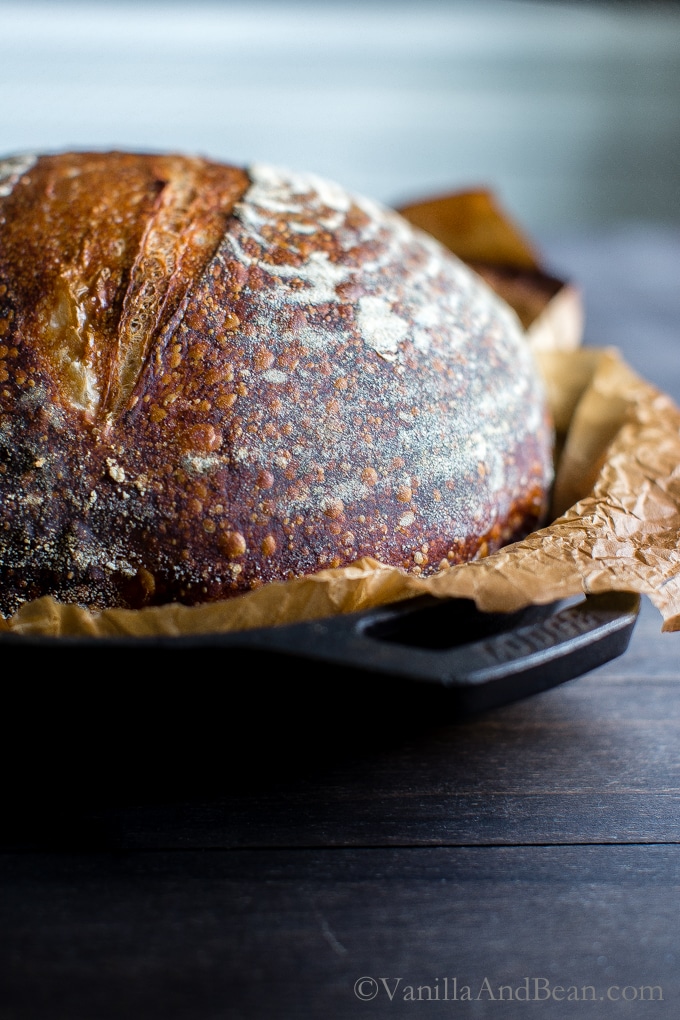
Looking for an easy sourdough bread recipe to start with? Check out my Everyday Sourdough or Multigrain Gluten Free Sourdough Bread post.
My Sourdough Toolkit (affiliate links):
-
- Glass Mixing Bowl
- 7 Quart Dutch Oven
- 10″ Cast Iron Skillet with Deep Dish Skillet for a lid
- Bench Scraper
- Parchment Paper
- Food Thermometer
- Lame – for scoring the dough
- Banneton(s)
- Digital Scale
More Sourdough Recipes to Love
- Sourdough Hamburger Buns
- Cranberry Sourdough Bread with Orange
- Rustic Sourdough Bread
- Soft Sourdough Dinner Rolls
- Maple Oat Sourdough Sandwich Bread
- Sourdough Pizza
Seeded Multigrain Sourdough Bread Recipe
Ingredients
For the Soaker:
- 1/4 C (40g) 10 Grain Cereal *(see note)
- 3 Tbs (25g) Rolled Oats not quick
- 2 Tbs (25g) Red Quinoa rinsed
- 2 Tbs (25g) Flax Seed
- 2 Tbs (25g) Hulled Sunflower Seeds unsalted
- 3/4 C (155g) Hot Water about 150F (65C), or soak the grains and seeds overnight in room temperature water
For the Dough:
- 1/4 C (50g) Sourdough Starter previously fed, bubbly and active
- 1 1/3 C (300g) Warm Water about 80f (26c)
- 2 1/2 Tbs (50g) Maple Syrup
- 3 C (400g) Bread Flour
- 1/2 C + 1 Tbs (100g) Whole Wheat Bread Flour or whole wheat flour
- 2 tsp (16g) Fine Sea Salt
Instructions
For the Soaker:
- In a medium mixing bowl add the cereal, rolled oats, quinoa, flax seeds, sunflower seeds and water. Set aside.
For the Dough:
- Mix the Dough: In the evening, whisk the starter, water and maple syrup together in a large bowl with a fork. Add the flours and salt. First, mix with a fork, the dough will be shaggy. Then mix by hand, mixing, folding and pushing the dough until the flour is fully incorporated and no dry bits are present. It will seem dry at first, but the more you work the dough, the more hydrated it will become. The dough will feel stiff and it will stick to your fingers as you go. Do this for about 3-4 minutes. Use the fork to scrape off the dough on your fingers as much as you can. Cover bowl with a damp tea towel. Set a timer for for 30 minutes and allow the dough to rest for 30 minutes. Now is a good time to feed/refresh your starter.
- Incorporate the Soaker: After the dough has rested, mix in the soaker. To do this, dump the soaker on top of the dough and begin kneading and folding the dough over and on top of itself, incorporating the ingredients of the soaker. Do this for about 1-2 minutes or until the soaker is evenly distributed in the dough. It will seem like a lot of added bits, but as you work the dough and as the dough develops through fermentation, the soaker will incorporate. The dough will be stiff, wet and sticky. If adjusting water or flour, now is the time to assess the dough and adjust as needed. Set a timer for 30 minutes and allow the dough to rest for 30 minutes.
- Fold the Dough: After the dough has rested, fold the dough. To do this, grab a portion of the dough while it remains in the bowl, stretch it up and fold it over, pressing your fingertips into the center of the dough. You'll notice the dough is less stiff and more workable at this point. Repeat, until you've worked your way around the dough. This is the first fold, and you can stop here and begin bulk fermentation, but If time permits, and optimally, you'll want to repeat this fold two more times as it improves the final dough's structure and crumb. Allow for about 30-45 minutes each between folds.
- Bulk (fermentation) Rise: After the last fold, cover the bowl with a damp towel and allow to rise overnight at room temperature. This will take about 8-10 hours at 70F (21C), but in a cooler kitchen the dough can take up to 12-14 hours to rise - this is the norm in my chilly kitchen. The dough is ready when it no longer looks dense, is jiggly when the bowl is shaken, and has about doubled in size.
- Shape the Dough: In the morning, and with damp fingertips, coax the dough into a floured work-surface. If making two boules (1 pound / 453 grams - each), moisten the cutting end of the bench scraper and cut the dough in half. For one or two boules, with moist fingers, take a portion of the dough, gently stretch it towards you and fold it over towards the center and pressing it down gently. Repeat this process until you work the dough all the way around. Using a bench scraper flip the dough over and let rest for 10 minutes. Meanwhile, line an 8-inch (20cm) bowl with a towel or lightly flour a banneton (or two as needed). Scrape any excess flour away on your work-surface using the bench scraper and using a spray bottle with water, lightly sprits the surface of the work-surface. This will help the dough grip the surface and help create a taught dough. With lightly floured hands and using the bench scraper again as needed to help move the dough (the dough is sticky), cup your left hand around the dough and pull the dough toward you in a circular motion with the bench scraper in the right hand, to tighten its shape and create a taught skin. Use the bench scraper as needed to work the dough as this dough is sticky. Re-flour your hands as needed.Once the surface is taut, give it a good dusting of flour and smooth it over the top. With one swift move, use the bench scraper to scoop the dough up and, place the dough into the bowl/banneton, bottom side up. Sprinkle the bottom of the dough with a dusting of flour.
- Second (proof) Rise: Cover the bowl with a damp tea towel and let rest for 30 minutes to 45 minutes. The dough is ready when it looks puffy and has risen slightly but has not yet doubled in size. Preheat the oven to 500F (260C). Arrange a rack in the center of the oven, and another just below it. Place a sheet pan on the bottom rack (see UPDATE just below). Cut a sheet of parchment paper to fit the size of a 7 quart Dutch oven or other large baking vessel leaving enough excess around the sides to transfer the bread to the pot. UPDATE: Burnt Sourdough Bottom: After testing various methods to remedy the too dark bottom problem, as commenters have mentioned on this sourdough recipe (and on other non V&B recipes - this is not uncommon in the sourdough world), I've finally found the simplest solution ever (duh!). Simply place a sheet pan on the oven rack under the rack your baking vessel is setting on. This protects the bottom of the vessel from the most intense heat of the oven.
- Score: To turn the dough out of the bowl/banneton, place the parchment over the dough and invert the bowl to release. Using the tip of a lame or a razor blade, score the dough about 1/2" (8mm) deep and about 2-3" (5-7cm) long on the top or any way you like. Use the parchment to transfer the dough to your baking vessel.
- Bake: Place your lidded vessel on the center rack and reduce heat to 450F (232C). Bake, lidded, for 20 minutes. Remove the lid and continue to bake for 30 -35 minutes, for one, 2 lb boule. If baking two, 1 lb boules, continue to bake lid off for 15-20 minutes. To check if the bread is ready, check the internal temperature of the loaf. It should read between 190F-205F when done. When finished, transfer to a wire rack. Cool for 1 hour before slicing. Sourdough is best consumed on the same day it's baked, but it lasts for 3-4 days stored at room temperature. Store at room temperature cut sides down.This bread freezes beautifully. Store baked bread in a freezer bag either whole or sliced for up to two weeks. Thaw at room temperature. This bread can go from freezer to toaster to make the most delicious toast!


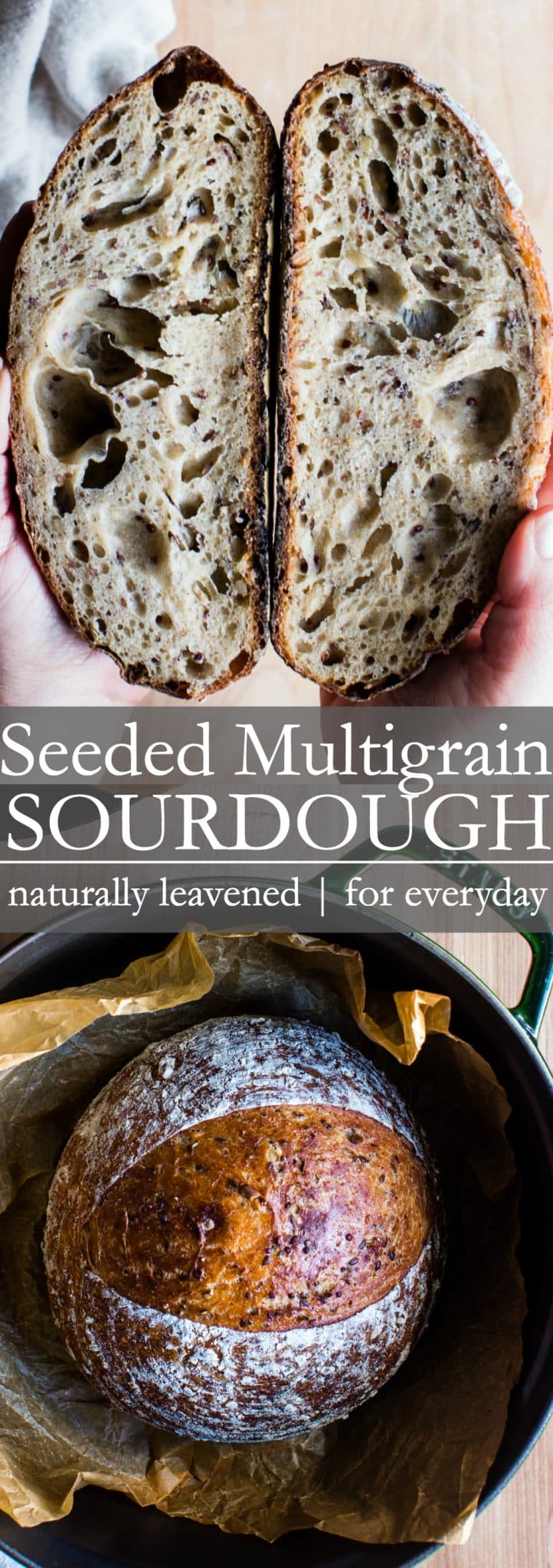 ambient
ambient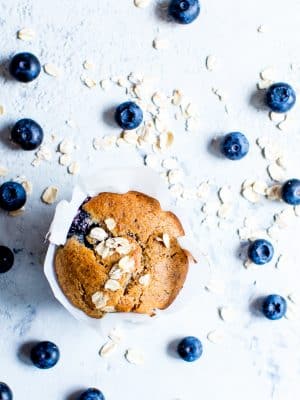
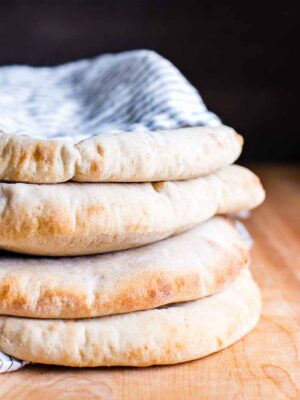
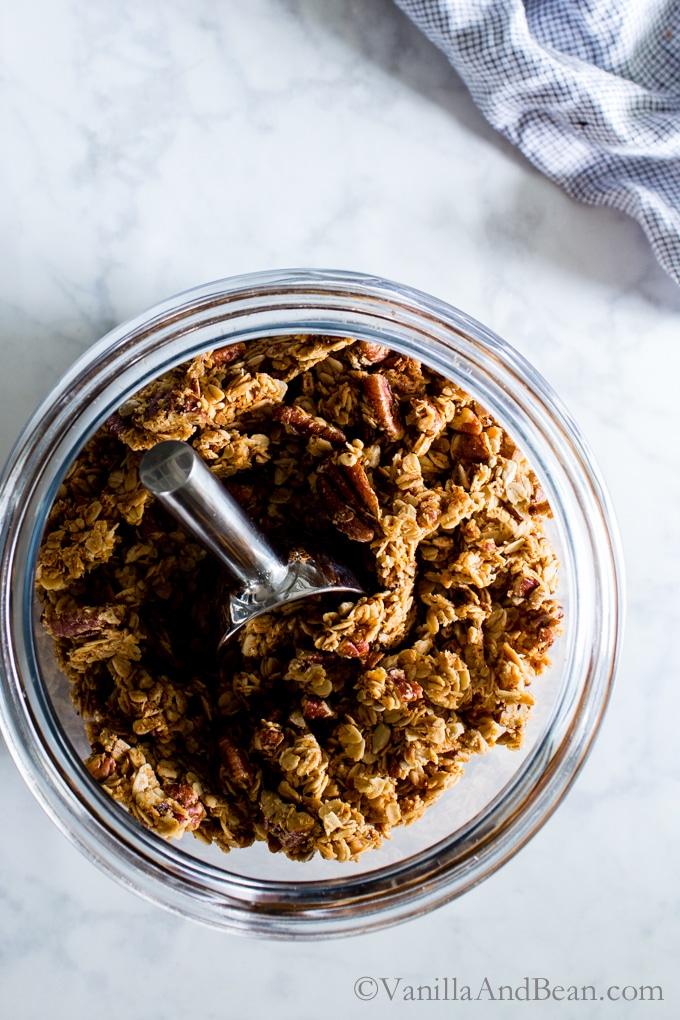
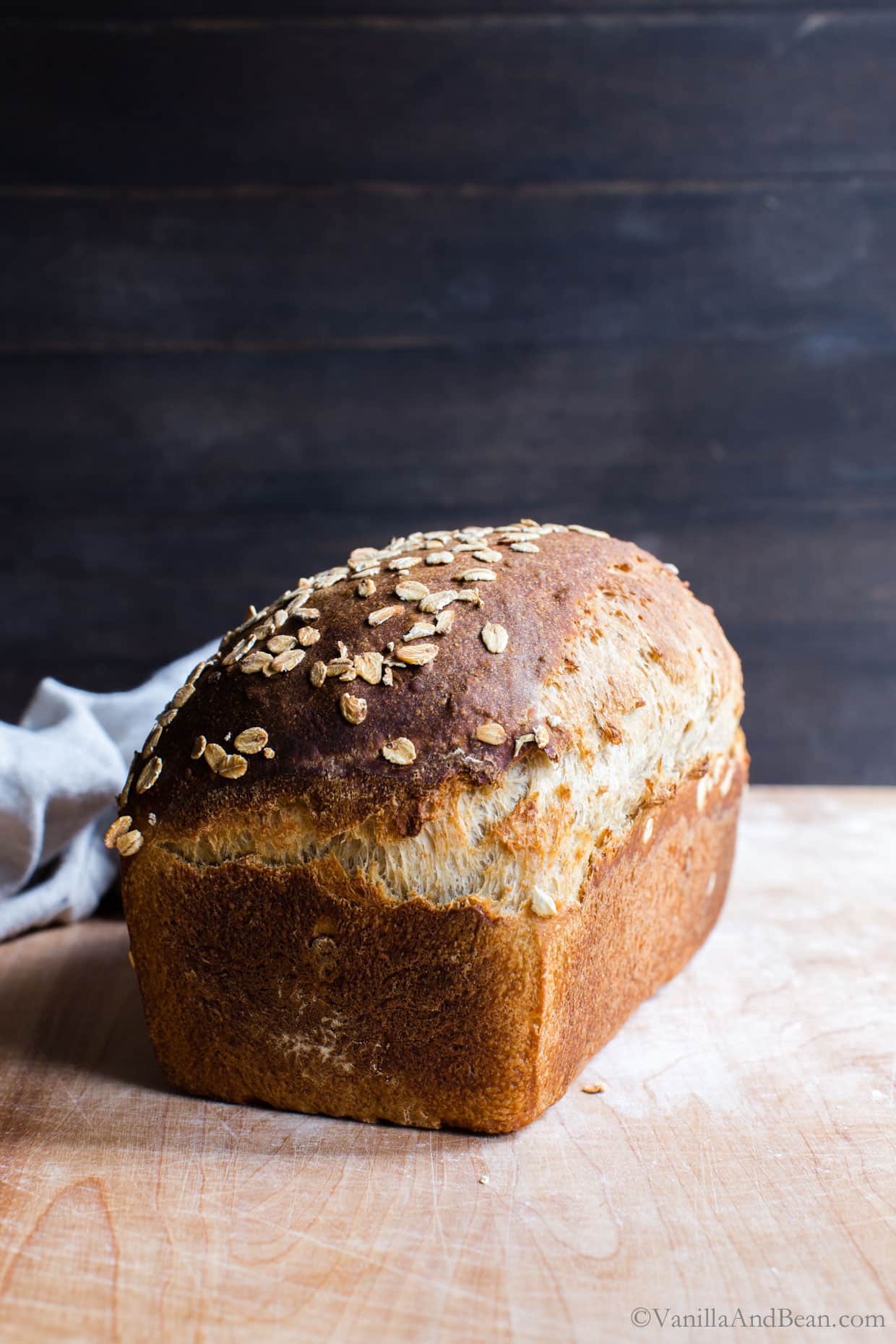
Just made today–yummy bread! 7 star! I used 7-grain cereal, sesame seeds instead of quinoa, & honey for maple syrup.
It was a bit hard to mix in the soaker. Next time could I use a Kitchen-Aid mixer with a bread hook instead?
Hi Mars! Hooray for a 7 star loaf of sourdough. Thank you for your note and sharing your tips. Yes on mixing in the soaker with a dough hook.. just until incorporated. Then, you can do your stretch and folds or mix briefly again with the dough hook.
I will try this recipe next because it looks amazing, but the high hydration gives me pause. Unless I miss something, the hydration is around 90% when all the water is accounted for….is that correct?
Hi Ernesto… thank you for your note! The hydration is high but a lot of the water is absorbed in the grains. Feel free to reduce the water down a bit when mixing or adjust after adding the soaker. Makers have have shared their experience in the comment section if you’d like to take a look. I hope you enjoy the recipe!
This bread is divine! Forgiving too. A few variations because I thought I had enough/some ingredients but ended having to make subs. 50g white whole wheat flour + 50g KA 10 grain flour instead of 100g ww. No quinoa so more 10-grain flour instead. 1T olive oil for a softer texture since my husband wanted something for sandwiches. Preheated Dutch oven cuz that’s what I usually do. Baked to 210 F. Followed Tom of Sourdough Journey’s guidance on bulk fermentation. This is now my fave sourdough recipe!!!
Can this be made as a regular loaf? We love your Maple Oat bread and my family like sandwich style loves better.
Hi Paula! SO glad you’re enjoying the Maple Oat Sourdough. You read my mind! I’m working on a Multigrain Sandwich Loaf as I found this recipe creates too much dough for a standard 9×5 inch loaf pan. I’ll have the Multigrain Sandwich Loaf recipe on the blog soon!
Hi. I’m making this bread today, it sounds delicious. I am wondering whether there is room in this recipe to cold ferment in the fridge after the second rise? I will often do that with regular sourdough bread while I’m at work and then bake when I get home. Just curious. Thanks!
Hi Cheryle! I’ve done a cold proof with this bread, but it tends to overproof (when bulk has doubled in size). If you’d like to cold proof, you’ll need to cut bulk fermentation to 50%-75%, shape then cold proof for 12-24 hours. Keep us posted!
Thank you so much! Maybe I’ll try it next time, it looks like I’ll have time in the morning to finish this process as written. Thanks again!
This is, without a doubt, my favorite bread recipe yet! We eat this at our house about every two weeks. It takes time, but is sooooo worth it! Thank you for this awesome bread recipe! Lisa
Perfect recipe! I made it exactly as written. I also gave all the ingredients (premeasured) to a friend for her to make her very first loaf of bread ever and it came out perfect as well. It has given her the confidence to keep baking bread. 10/10
I’ve made this recipe like a dozen itmes now, and even when I mess it up, it turns out great.
I made this bread for my husband and he LOVED it. Now he’s asking questions like, ‘How’s the starter looking?’. Question… if I want to incorporate more soaker, do I need to make any other adjustments?
Hi Coleen! That’s fantastic that it’s piqued his interest! More soaker will need more water, so then you’ll decrease the amount of water in the initial mixing of the dough. You may need to experiment with those adjustments.
Does the soaker need to cool down before I add it in? I tried this recipe and it turned out flat. It still tasted great but a huge disappointment to me. I want to try again and next time I will put in the refrigerator overnight for the 2nd rise before baking.
Hi Luann! By the time you add the soaker to the dough it will have had time to cool off since you’re making it before you mix and rest the dough.
On soaker do we strain water out or add water as well. Can’t wait to try
Hi John… the seeds and grains will soak up all the water, so there’s nothing to strain. Just add it right into your dough. Keep us posted!
Love this bread! But is the vessel pre heated with oven or is it cold and put into hot oven
Hi Holly! Thank you for your note. The vessel is not pre heated. Put the bread right in to a cold DO and into the oven.
This may be my best – and healthiest – boule yet! Beautiful mahogany crust – no bottom burn! Amazing open, supple crumb. And chock full of seedy goodness – I concocted my own mix of nuts and grains: sunflower, oats, flax, chia, sesame…coconut. Oh yeah! ~Thanks! I’ll be doing this again. (And I never leave comments…)
Hi Michael! Thank you for your comment and five star review ☺️ . That mix of nuts and grains sounds delish! Hooray for your best yet!
This is fantastic! Almost perfection!! It’s definitely a wetter dough than I’m used to but thank goodness for the helpful reviewer’s hints and to your helpful notes! Thank you for this recipe! It’ll be a rotation in my household!
SO excited, Marilyn. Thank you for coming back and sharing your success, 5 qt DO tip and giving the sourdough a go!
I have a 5 quart Dutch oven. Does this recipe have too much dough for that size?
Hi Donna… probably so. If you divide the dough in half, however, you could get away with a 5 quart easily. The dough needs enough room to expand. I use a 7 quart DO or a 10 inch cast iron skillet with a tall cast iron lid (double cooker).
Thank you so much.
I used a 5 qt DO for 1 loaf (without splitting the dough in half) and it was fine!
Hi Marilyn! Thank you for letting us know! That’s terrific. I’ll make a note!